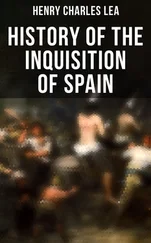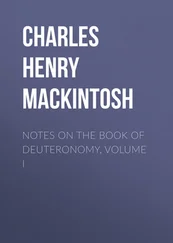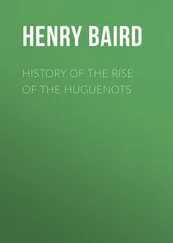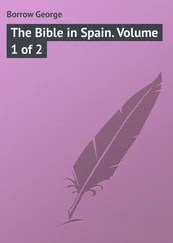Sigüenza. A tribunal was early established in Sigüenza which must have been busy if we may believe the statement that at an auto de fe in 1494 it relaxed a hundred and forty-nine victims to the secular arm. In 1506, Deza dismissed the officials for the reason that it was about to be united with Toledo, a merger ratified by Ximines in 1509. Toledo neglected it and it was transferred to Cuenca, q. v. In the eighteenth century there would appear to be some kind of subordinate tribunal there, for about 1750, Saragossa, in a report of its personnel, states that one of its five inquisitors is assisting at Sigüenza.[1326]
Tarazona. A tribunal established here in the early period was merged into that of Saragossa in 1519.[1327]
Tarragona. When, in 1643, the inquisitors of Barcelona were ejected, they were, after some delay, sent to open their tribunal at Tarragona, where they remained until the suppression of the Catalan rebellion in 1652.[1328]
Teruel. In 1485 a tribunal was established in Teruel after some resistance. At what time it was transferred to Valencia does not appear, but a cédula of October 2, 1502 is addressed to the inquisitors of Valencia residing in Teruel and Albarracin, showing that it was then subordinate to Valencia. In 1518 it was discontinued and the district was subjected to the direct jurisdiction of the Valencian tribunal, but Cardinal Adrian, by a provision of Nov. 21st of the same year, transferred it to Saragossa and then, March 3, 1519 restored it to Valencia. This was felt by Aragon as a grievance and, at the Córtes of Monzon, in 1533 it asked that Teruel and Albarracin should be restored to the Saragossa tribunal, but the request was peremptorily refused and they remained subject to Valencia.[1329]
Toledo. In 1485 the tribunal of Ciudad Real was transferred to Toledo. At first the limits of its district seem not to be clearly defined for, in 1489 the inquisitors were told to go to Guadalajara and Ferdinand ordered the local authorities to show them favor and allow them to make arrests. See Corte, Cuenca, Segovia, Sigüenza, Valladolid for sundry changes in its district. In 1565 the official designation is the city and archbishopric of Toledo, the city and bishopric of Sigüenza and the bishoprics of Avila and Segovia, which apparently remained permanent, except the detachment of Madrid.[1330]
Tortosa. For some reason the bishopric of Tortosa, although part of Catalonia, was subject to the tribunal of Valencia. When, in 1697, Vendôme captured Barcelona, the tribunal emigrated to Tortosa and established itself in the Colegio Imperial. Although peace was declared soon afterwards it remained in Tortosa at least until 1700 and presumably stayed until the conclusion of the War of Succession, when it was reinstated in Barcelona in 1715.[1331]
Tudela. See Navarre.
Valencia. The old Inquisition of Valencia was reorganized in 1484, and continued to the end. As seen above, it parted with Orihuela to Murcia, obtaining Teruel and Albarracin from Saragossa and Tortosa from Barcelona.
Valladolid. A tribunal was assigned to Valladolid in 1485, but did not get into working order until 1488. After this it was suspended to be revived in 1499, as appears from a letter of Isabella, Dec. 24, 1498. The northern provinces of Spain were comparatively free from heresy and Ximenes, in his reorganization of 1509, assigned to Valladolid the enormous district comprising the sees of Burgos, Osma, Palencia, Segovia, Avila, Salamanca, Zamora, Leon, Oviedo and Astorga and the abbeys of Valladolid, Medina del Campo and Sahagun. In 1516 the enumeration is the same except the omission of Zamora and the addition of Ciudad Rodrigo and Calahorra. Roughly speaking, it may be assumed to comprise the whole of the provinces of Old Castile, Leon and Asturias. Valdés, August 8, 1560, repeated April 12, 1562 made over the whole of this to Toledo, but the grant can only have been temporary for, in 1565 the Toledan inquisitors described themselves as of the city and archbishoprics of Toledo, the city and bishopric of Sigüenza, with the bishoprics of Avila and Segovia, and in 1579 we find the inquisitors of Valladolid styling themselves inquisitors of the kingdoms of Castile and Leon and the principality of Asturias. This enormous district it continued to retain, subject to the easternmost portion detached to Calahorra or Logroño and to its translation in 1601 to Medina del Campo and thence to Burgos, from which it returned to Valladolid, probably about 1630.[1332]
Xeres. In 1495, Rodrigo Lucero is described as Inquisitor of Xeres. In 1499 the sovereigns appointed Alonso de Guevara Inquisitor of Cadiz and Xeres. The tribunal continued there for some time. In 1515 Ferdinand alludes to Luis de Riba Martin “our late receiver in the Inquisition of Xeres,” who in dying had left to the treasury a legacy of 30,000 mrs. for the relief of his conscience.[1333] I have met no later reference to it and probably it was soon afterwards merged into the tribunal of Seville.
Separation of Inquisitions of Castile and Aragon.
| Reunion of Inquisitions of Castile and Aragon. |
| 1518. |
Cardinal Adrian of Utrecht. Commissioned March 14, 1518. Elected to papacy Jan. 9, 1522. Continued to act until his departure for Rome from Tarragona Aug. 4, 1522. |
| 1523. |
Alfonso Manrique, Cardinal and Archbishop of Seville. Commissioned Sept. 10, 1523. Died Sept. 28, 1538. |
| 1539. |
Juan Pardo de Tavera, Cardinal and Archbishop of Toledo. Appointed June 10, 1539. Commissioned Nov. 7, 1539. Took possession Dec. 7, 1539. Died Aug. 1, 1545. |
| 1546. |
Francisco García de Loaysa, Archbishop of Seville. Commissioned Feb. 18, 1546. Took possession March 29, 1546. Died April 22, 1546. |
| 1547. |
Fernando Valdés, Archbishop of Seville. Commissioned Jan. 20, 1547. Took possession Feb. 19, 1547. Resigned in 1566. Died Dec. 9, 1568. |
| 1566. |
Diego Espinosa, Cardinal and Bishop of Sigüenza. Commissioned Sept. 8, 1566. Took possession Dec. 4, 1566. Died Sept. 15, 1572. |
| 1572. |
Pedro Ponce de Leon y Córdova, Bishop of Plasencia. Commissioned Dec. 7, 1572. Did not take possession; his brief arrived four hours after his death, Jan. 17, 1573. |
| 1573. |
Gaspar de Quiroga, Cardinal and Archbishop of Toledo. Commissioned April 20, 1573. Took possession May 28, 1573. Died Nov. 12, 1594. |
| 1595. |
Gerónimo Manrique de Lara, Bishop of Avila. Commissioned Aug. 1, 1595. Died Nov. 1, 1595. |
| 1596. |
Pedro de Portocarrero, Bishop of Cuenca. Commissioned Jan. 1, 1596. Resigned in 1599. Died Sept. 20, 1600. |
| 1599. |
Fernando Niño de Guevara, Cardinal and Archbishop of Seville. Commissioned Aug. 11, 1599. Took possession Dec. 23, 1599. |
|
Resigned in 1602. Died Jan. 1, 1609. |
| 1602. |
Juan de Zuñiga, Bishop of Cartagena. Commissioned July 29, 1602. Died Dec. 20, 1602. |
| 1603. |
Juan Bautista Acevedo, Royal Confessor and Patriarch of the Indies. Commissioned Jan. 20, 1603. Died July 8, 1608. |
| 1608. |
Bernardo de Sandoval y Roxas, Cardinal and Archbishop of Toledo. Commissioned Sept. 12, 1608. Died Dec. 7, 1618. |
| 1619. |
Luis de Aliaga, Royal Confessor. Commissioned Jan. 4, 1619. Resigned in 1621. Died Dec. 3, 1626. |
| 1622. |
Andrés Pacheco, Bishop of Cuenca. Commissioned Feb. 12, 1622. Died April 7, 1626. |
| 1627. |
Antonio de Zapata, Cardinal and Archbishop of Burgos, 1600–1605. Commissioned Jan. 30, 1627. Resigned in 1632. Died April 23, 1635. |
| 1632. |
Antonio de Sotomayor, Royal Confessor and Archbishop of Damascus. Commissioned July 17, 1632. Resigned June 21, 1643. Died in 1648. |
| 1643. |
Diego de Arce y Reynoso, Bishop of Plasencia. Commissioned Sept. 18, 1643. Took possession Nov. 14, 1643. Died June 20, 1665. |
| 1665. |
Pascual de Aragon, Archbishop of Toledo. A document of Oct. 26, 1665, is drafted in his name. Resigned soon afterwards. |
| 1666. |
Juan Everardo Nithardo, Royal Confessor and Cardinal. Commissioned Oct. 15, 1666. Banished Feb. 25, 1669, as ambassador to Rome. Died in 1681. |
| 1669. |
Diego Sarmiento de Valladares, Bishop of Plasencia. Commissioned Sept. 15, 1669. Died Jan. 29, 1695. |
| 1695. |
Juan Thomás de Rocaberti, Archbishop of Valencia. Commissioned Aug. 2, 1695. Died June 13, 1699. |
| 1699. |
Alfonso Fernández de Córdova y Aguilar. Died Sept. 19, 1699, before the arrival of his brief. |
| 1699. |
Balthasar de Mendoza y Sandoval, Bishop of Segovia. Commissioned Oct. 31, 1699. Resigned in 1705. Died Nov. 4, 1727. |
| 1705. |
Vidal Marin, Bishop of Ceuta. Commissioned March 24, 1705. Died March 10, 1709. |
| 1709. |
Antonio Ybañez de la Riva-Herrera, Archbishop of Saragossa. Commissioned April 5, 1709. Died Sept. 3, 1710. |
| 1711. |
Francesco Giudice, Cardinal. Commissioned June 11, 1711. Resigned in 1716. Died Oct. 10, 1725. |
| 1715. |
Felipe Antonio Gil de Taboada. Commissioned Feb. 28, 1715. Did not serve. |
| 1717. |
Josef de Molines. Proclaimed Jan. 9, 1717, while in Rome. Detained in Milan by the Austrians and died there. |
|
Juan de Arzamendi. Died without serving. |
| 1720. |
Diego de Astorga y Cespedes, Bishop of Barcelona. Commissioned March 26, 1720. Resigned in 1720. Died Feb. 9, 1724. |
| 1720. |
Juan de Camargo, Bishop of Pampeluna. Commissioned July 18, 1720. Died May 24, 1733. |
| 1733. |
Andrés de Orbe y Larreategui, Archbishop of Valencia. Commissioned July 28, 1733. Died Aug. 4, 1740. |
| 1742. |
Manuel Isidro Manrique de Lara, Archbishop of Santiago. Commissioned Jan. 1, 1742. Died Jan. 10, 1746. |
| 1746. |
Francisco Pérez de Prado y Cuesta, Bishop of Teruel. Appointed July 26, 1746. Commissioned Aug. 22, 1746. Died in July, 1755. |
| 1755. |
Manuel Quintano Bonifaz, Archbishop of Pharsalia. Commissioned Aug. 11, 1755. Resigned in 1774. Died Dec. 18, 1775. |
| 1775. |
Felipe Beltran, Bishop of Salamanca. Appointed Dec. 27, 1774. Commissioned Feb. 27, 1775. Took possession May 5, 1775. Died Nov. 30, 1783. |
| 1784. |
Agustin Rubin de Cevallos, Bishop of Jaen. Appointed Jan. 23, 1784. Commissioned Feb. 17, 1784. Took possession June 7, 1784. Died Feb. 8, 1793. |
| 1793. |
Manuel Abad y la Sierra, Archbishop of Selimbria. Took possession May 11, 1793. Resigned in 1794. Died Jan. 12, 1806. |
| 1794. |
Francisco Antonio de Lorenzana, Archbishop of Toledo. Took possession Sept. 12, 1794. Resigned in 1797. Died April 17, 1804. |
| 1798. |
Ramon Josef de Arce y Reynoso, Archbishop of Saragossa. Resigned March 22, 1808. Died in Paris, Feb. 16, 1814. |
| 1814. |
Xavier Mier y Campillo, Bishop of Almería. Took possession in August, 1814. In a series of documents he ceases to appear about June, 1818, and for some months the Suprema acts as in a vacancy. |
| 1818. |
Gerónimo Castellon y Salas, Bishop of Tarazona. The earliest document in which I have met his signature is dated Oct. 21, 1818. He had no successor and died April 20, 1835. |
| 1755. |
Manuel Quintano Bonifaz, Archbishop of Pharsalia. Commissioned Aug. 11, 1755. Resigned in 1774. Died Dec. 18, 1775. |
| 1775. |
Felipe Beltran, Bishop of Salamanca. Appointed Dec. 27, 1774. Commissioned Feb. 27, 1775. Took possession May 5, 1775. Died Nov. 30, 1783. |
| 1784. |
Agustin Rubin de Cevallos, Bishop of Jaen. Appointed Jan. 23, 1784. Commissioned Feb. 17, 1784. Took possession June 7, 1784. Died Feb. 8, 1793. |
| 1793. |
Manuel Abad y la Sierra, Archbishop of Selimbria. Took possession May 11, 1793. Resigned in 1794. Died Jan. 12, 1806. |
| 1794. |
Francisco Antonio de Lorenzana, Archbishop of Toledo. Took possession Sept. 12, 1794. Resigned in 1797. Died April 17, 1804. |
| 1798. |
Ramon Josef de Arce y Reynoso, Archbishop of Saragossa. Resigned March 22, 1808. Died in Paris, Feb. 16, 1814. |
| 1814. |
Xavier Mier y Campillo, Bishop of Almería. Took possession in August, 1814. In a series of documents he ceases to appear about June, 1818, and for some months the Suprema acts as in a vacancy. |
| 1818. |
Gerónimo Castellon y Salas, Bishop of Tarazona. The earliest document in which I have met his signature is dated Oct. 21, 1818. He had no successor and died April 20, 1835. |
Signature of the Last Inquisitor-general.












